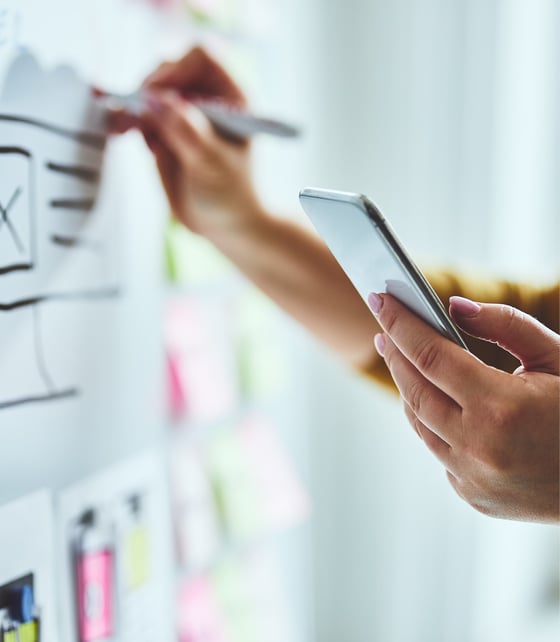Design process
Adnovum has proposed a standardized design process based on the Double Diamond model. This approach helps to better understand a customer and their challenges before starting to develop a solution. It also enables exploration of creative and innovative ways to address challenges and identify opportunities. Diamond one represents the exploration and analysis phases, and diamond two represents the ideation and prototyping phases. Double Diamond helps identify targeted solutions before beginning expensive and time-consuming development.
1. EXPLORE
We started the project with an extensive scoping workshop in which all key stakeholders participated and had the opportunity to contribute (Milestone: SCOPING ). Scoping was all about jointly defining the framework and creating a common understanding of the project. In addition, we collaboratively developed initial rough user types in order to be able to specifically prepare the survey of users (user research). In the workshop, we also analyzed the existing user process to get a picture of the problems and the potential (ACTUAL user journey).
2. ANALYZE
On this basis, we then developed a questionnaire, interviewed users and observed them in their everyday work (user research). This allowed us to better understand their context, goals, tasks and pain points and to create a solid basis for the development of a meaningful information architecture. It was very interesting to see that ERNE’s employees print out a lot of things in the quotes and manually mark them on paper with different colors to get an overview. In a workshop, the results of the analysis were jointly evaluated, and fundamental decisions were made for the product (milestone: DECISIONS).
3. IDEATE
Based on the good results of the user research, we jointly developed the overall navigation concept (TARGET User Journey) in a half-day workshop to define the functionality and the expected complexity. Then we created a detailed screen map to define and visualize the number of necessary screens as well as their interrelationships.
4. PROTOTYPE
In the fourth phase, we developed an interactive prototype and visual design in several iterations. The prototype allowed all stakeholders to test the software or product vision and see how it would perform (Milestone: SOLUTION VISION). It provided ERNE with a good starting point for estimating the implementation costs of the software, obtaining quotes, and independently tackling the developing and testing phases (milestone: SOLUTION).









